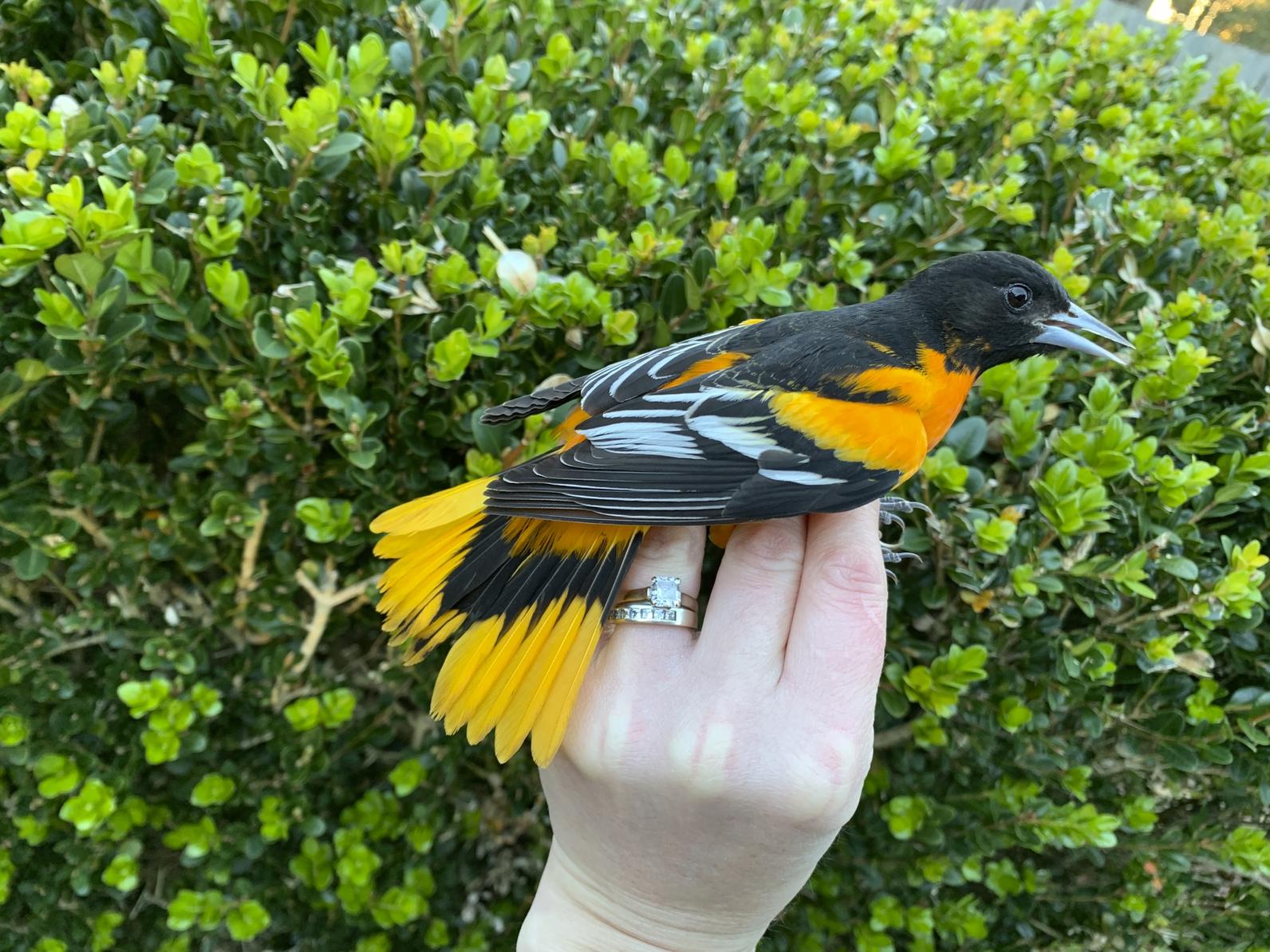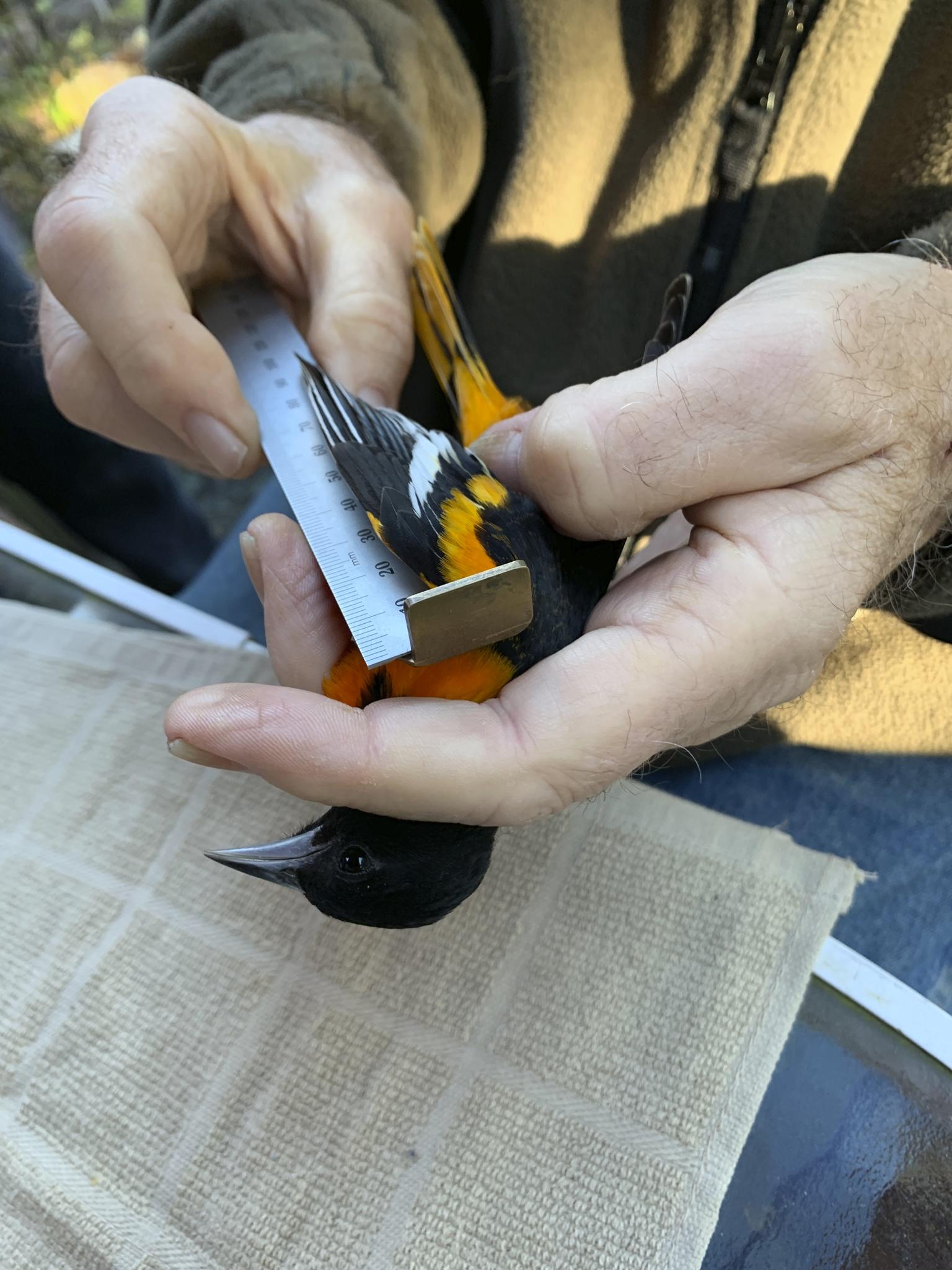As part of the 22nd Great Backyard Bird Count, the South Carolina Department of Natural Resources (SCDNR) conducted a survey of Baltimore Orioles in South Carolina. Many of us associate this colorful bird with places further north, where they breed during the summer months. Meanwhile, we in South Carolina typically see orioles during migration, when they stay just a few days as they pass through the state.
However, trends have changed over the last few decades, and Baltimore Orioles are now seen more frequently in South Carolina—oftentimes showing up in late-fall and remaining throughout the winter. The reason for the increase in wintering Baltimore Orioles is still uncertain, but climate change is likely a contributing factor, with warmer winters allowing the birds to survive in South Carolina. Luckily for oriole lovers, these beautiful birds often frequent backyards during their stay.
In an effort to better understand the wintering habits of Baltimore Orioles, Lex Glover, Wildlife Technician with the SCDNR Bird Conservation Program, banded more than 1,100 orioles at 41 sites around South Carolina between 2009 and 2015. Earlier this month, Jen Tyrrell, Audubon South Carolina’s Bird Friendly Communities Coordinator and Master Bird Bander, accompanied Lex to a banding site on James Island that he had used during the study.

Feeder traps, which are similar to crab traps, were put out first thing that cold February morning and baited with grape jelly and mealworms to entice hungry orioles. It turned out to be a very busy morning, with the team processing 30 Baltimore orioles, including 29 new bands and one recapture. The recapture was a beautiful adult male that was banded at the same site as a second-year bird in 2013, making it seven years old today! Recaptures like this one make for interesting data over the years; with this bird likely frequenting the same jelly feeders on James Island every winter since it was first banded in 2013.
As members of the blackbird family, Baltimore Orioles are closely related to birds like grackles and the familiar Red-winged Blackbird. Like most blackbirds, orioles fuel up on insects during the summer months but turn to more of a fruit-based diet in the winter. If you’re looking to attract orioles to your yard, consider putting out some of the birds’ favorite foods, most notably grape jelly, live mealworms, oranges, and nectar. There is a wide range of bird feeders suitable for orioles, from hanging saucers that hold jelly, to short pegs meant for orange halves and nectar feeders made especially for orioles; though orioles will drink from hummingbird feeders, too! Suet, a common bird food with high-fat content, is also a favorite of orioles when the weather gets cold.

In addition to food, having a bird-friendly yard is a great way to attract orioles and other species. Planting native plants is perhaps the best way to create a bird-friendly yard capable of providing food for birds throughout the year. You can use Audubon’s native-plant finder to find native plants specifically for orioles and for other species as well.
When it comes to orioles, it’s okay to include a mix of some exotic plant species, like camellias, too. Though not native to this region, orioles use these non-invasive, evergreen shrubs as a source of cover and visiting the plants’ winter-blooming flowers for nectar.
If you notice orioles in your yard, or anywhere else for that matter, please report your sightings to E-Bird. Not only does this free website and app allow you to keep records of your bird sightings, but the data you collect is also accessible to researchers all over the world. Though the Great Backyard Bird Count is over, Baltimore Orioles will be around for at least another month. We encourage you to keep collecting data in your yard!




